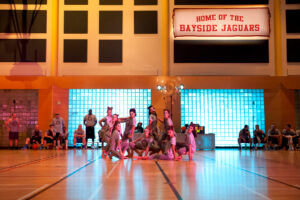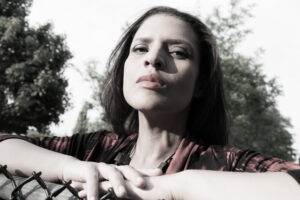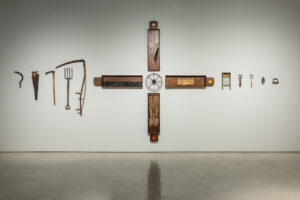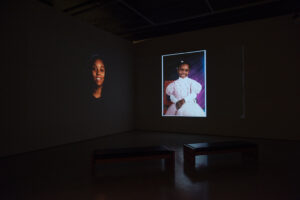Artists have incorporated symbolism, imagery, and iconography into their work since man first began to delve into the world of visual expression. Today, realistic and abstract symbols are used to represent human thoughts and emotions. The Secret Language of Art, curated by Mary Anne VanWatteghem, includes historical and contemporary paintings, photographs and sculptures from the permanent collection, exploring and interpreting the various ways artists have used signs and symbols to create hidden meanings and allegories in their work.
In Pyramid (c.1937), Group of Seven artist Lawren Harris, in his spiritual search for a higher plane of existence, places abstract forms in a floating, indeterminate space. For Harris, the pyramid suggests various aspects of the spiritual world. The composition directs the viewers gaze upwards toward the sky in a search for order and spirituality in nature. The placement of the pyramid above the earthjly green form reinforces its otherworld impression of a dreamlike landscape, while the use of blues evokes spirituality and religious feeling.
Before the 20th centure, symbolism was often associated with religion and the fleeting nature of life. St.Francois (1874), a devotional portrait by Anoine Plamondon, is an example of memento mori, a Latin phrase that translates to ‘remember thy death’. Wearing the brown robes of his religious order, St. Francis of Assisi looks upwards toward a divine light and holds a skull, symbolizing the transitory nature of things as he contemplates death. Plamondon’s painting invites the viewer to do so as well. Such paintings were the outcome after years of disease and famine, as well as political, social, and religious conflict in New France in the late 1800s.





